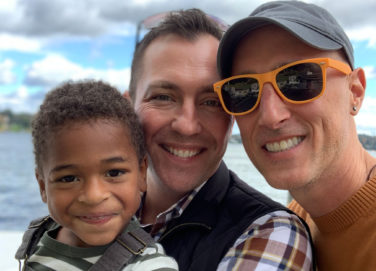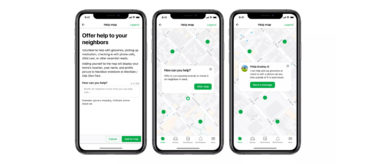Our industry is slowly finding a new equilibrium between live and virtual meetings. One thing is for certain: There is no such thing as doing just one and not the other.1 There are several reasons why virtual sometimes has the edge over live: When you’re only casually interested in something, when epidemiological considerations take precedence, when health limitations make it near impossible for patients to travel, or when the meeting’s focus is of a more coordinative rather than substantive nature.
But as several surveys have noted, people are hungry to get together,2 in-person,3 face-to-face.4 One notable shift is that the desire to showcase one’s life on social media plays less of a role now than compared to pre-pandemic.5 Instead, there’s a genuine interest to share time and space together. You go to an event because you really want to go there. In healthcare, it means you want to gain deeper education, understanding, and connection. You don’t just want to encounter a subject matter, you want to immerse yourself in it.
All of this presents a tremendous opportunity for healthcare brands who want to be close to the patients and caregivers for whom their products are a part of life. Medicine is a high-involvement category. Decisions aren’t made on a whim; a process involving several stakeholders is required before the product is actually used in a patient. If you’re living with a serious health condition, chances are you’re more than just casually interested in talking to someone who has the same condition, or someone who has a product specifically designed to help you manage the disease.
Reactivating Our Most Powerful Tool
If you’ve been in patient engagement long enough to remember live events, you might recall what patients used to say about those opportunities: “Life changing,” “humbling,” and “grateful” are a few of the recurring words used in the feedback forms. You might also recall the personal connections and friendships that were formed at a patient engagement event, and how those have grown well beyond the time-restricted setting of the meeting itself. Getting patients together to form a community and to engage with industry is the most powerful tool to move the needle for any healthcare marketing and communications objective.
For pandemic-related reasons, this tool was taken away from us for a while. Virtual events have been a thing in patient engagement before the pandemic and have grown exponentially when other options got canceled. They will continue to have a place in patient communication. Biopharma’s role over the last three years has been laudable—getting lifesaving vaccines and drugs on the market in record time is where most of the public accolades have been. But it’s just as important that the patient engagement train has been able to roll on practically without interruption, just on a different track. Industry is continuing to make good on its pledge of being patient-centric, by keeping everybody safe and maximizing what we can do to support patients and caregivers.
People-based Medicine
The gradual easing of restrictions is now opening a limited-time window of opportunity: Many brands have already made the move back to in-person patient engagement. They know that face-to-face is when we make the most meaningful connections. Face-to-face is when we most effectively listen and tell stories. It’s time to give this experience back to people.
The meaning of a pharmaceutical brand is not a molecule, it’s people. When the brand communicates through leaflets, TV commercials and websites, it provides information and hopefully some level of motivation. But when it communicates through people and their stories, it proves that it can be part of people’s lives.
Quality of Listening
As the stoic philosopher Epictetus once noted, we have one tongue and two ears, so we may listen twice as much as we speak. This holds true in patient engagement as well: Listening is at least as important to biopharma as everything else. We want to learn what patients and caregivers need and want. A questionnaire helps us get systematic answers and neat statistics. A virtual meeting allows for deeper insights that patients can offer up proactively. However, in both cases you only capture what’s top of mind. What if we don’t ask the right questions on the survey? What if the patients have become so accustomed to certain issues and found their own work-around to them that they don’t even bring them up anymore? At an in-person meeting, we would encounter these things because for a limited time, we’re actually that fly on the wall. We’re right there with the patients. We’re a part of a brief period in their lives. An in-person meeting will compensate for the blind spots that other ways of connecting can leave open.
Patients and caregivers are eager to once again meet with their peers and their allies within the biopharma industry. We’ve all had to do without for far too long. Time to swap those pajamas out for real clothes, blow the dust off that suitcase, and get together.
References:
1. Pennington, Adrian. “Consumers Want to Live Their Experiences In-Person and Online.” NAB Amplify. https://amplify.nabshow.com/articles/consumers-want-to-live-their-experiences-in-person-and-online.
2. Cihakjun, Lennon. “96% of People Plan to Attend ‘Some Form’ of Live Event Once Safe, According to Study.” EDM.com. https://edm.com/features/united-talent-agency-pandemic-entertainment-consumer-habits-study.
3. Goldsmith, Jill. “Consumers Hungry for Live Events Post-Pandemic Say They’ll Cut Spending Elsewhere to Go – Study.” Deadline. https://deadline.com/2021/06/live-events-uta-pandemic-movie-theaters-sports-concerts-1234780979.
4. Segal, Barri. “Poll: Live Event Attendance on the Rise.” Bankrate.com. https://www.bankrate.com/finance/credit-cards/covid-live-events-poll.
5. Cooper, Mariah. “Consumers Are Hungry for Live Events. Here’s How Brands Should Respond.” Campaign. https://www.campaignlive.com/article/consumers-hungry-live-events-heres-brands-respond/1719016.









